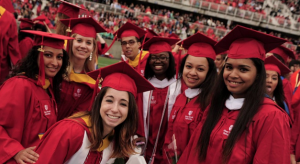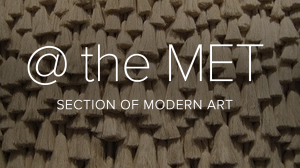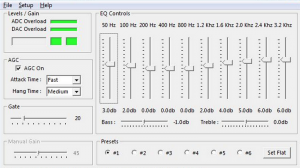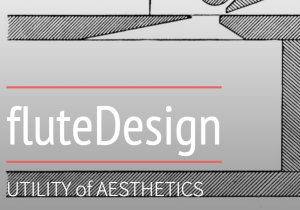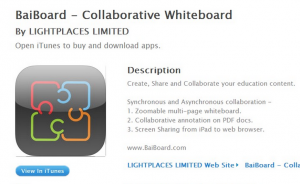Throughout this course, the iPad was extremely helpful in exploring different aspects of the Disruptive Trinity of Community – Identity – Design. By using apps like Pop and plugging in to Gdrive our group communicated continually with a purpose. Since we had specific objectives to achieve, and we were required to address specific issues related to readings and topics introduced in class, our team acted as “Community of Practice,” as far as I understood Wenger’s description of this term. The iPad served us not only as a tool to connect and collaborate; I came to conceive of this mobile device as a “global broadcasting tool” which facilitates my interest in communicating to others about my interests, creations, research, and exploration of myself, my community, and my miniuniverse. Thanks to recent experiments with prototyping tool called POP, I can experiment with a number of different app ideas that I have, exploring workflow and practical aspects of how objects interact on a touch screen. This practical perspective on app development and has expanded my understanding of the options that are available through mobile technology to communicate and interact with people using digital mobile tools.
Author Archives: jloomis
Too Disruptive – New Design Challenge:
How can we create a platform that builds community by connecting students to food?
OR
How can we create a platform that builds community by informing students of local events, and campus activities that provide cheap (or free) food options?
The iPad as a Global Broadcasting Tool
One of the main ways my use of the iPad has evolved thanks to CDT 450 is that my mind is beginning to develop a deeper understanding of the iPad as a MOBILE GLOBAL BROADCASTING TOOL, and the implications for education in general. I can read, take notes, sketch, record video, audio, research, etc. I’ve been doing that for years – But now I’m thinking more about how the iPad can help me to communicate and share my creations, ideas, and discoveries with a global audience – especially when I create something compelling enough to grab and maintain people’s attention.
For me some of my most productive learning comes through interacting with other students and experts. I know that my understanding is increased when I am required to create something related to course material and present it, or creatively share it online. As I mentioned above, I’m learning new ways to do this throughout my learning experience, from collaborating online, to presenting to a group.
Too Disruptive Design Challenge for InteGreat App
Too Disruptive Design Challenge:
How can we create an engaging social media platform / campaign called InteGreat, which will promote cross cultural events and activities at Stony Brook that encourage the diverse community at the university to develop an easy appreciation of, and deep respect for cultural differences within the community?
We are convinced that through social interaction, people from different socioeconomic backgrounds can get to know each other and at the same time participate in a nationwide movement to increase awareness that communities across America need to engage in activities that improve race relations.
We decided to focus on this app after discussing the pros and cons of the other app ideas put forward by:
Richard – Educational App to replace Blackboard
Katherine – App to airdrop notes to other students in close proximity
Chris – Task manager app that allows delegation and progress reports
One reason we decided on InteGreat was that the other three apps have certain areas that overlap, but we could not figure out how to combine these common features to create a compelling design challenge phrase. InteGreat seems like the most feasible app to create, and it has practical applications that are needed in the SBU community and in American society on a large scale.
Regarding INTEGRATION at Stony Brook, this is what we think we know:
SBU is an extremely diverse campus (but not necessarily integrated).
The diversity extends beyond each category into tons of sub-categories.
Students at SBU come from a wide variety of socioeconomic backgrounds:
– Variety of ethnicities – the percentage of each ethnicity that attends SBU.
– Variety of countries.
– Variety of places within those countries.
There are dozens of USG-funded clubs / groups based on religion, origin, interests, music, sports, art, academic areas, gender issues, politics, etc.
Number of members and funding that each club has and which clubs are most popular.
Integration is different than inclusion.
Here’s what we DON’T KNOW:
What efforts to increase integration at SBU already exist?
Do students, teachers, staff at SBU perceive a problem with integration?
What is Student Activities doing? Office of Cross Cultural Affairs? Study Abroad? International Students Services? Faculty? Advising (undergrad. colleges, ATAS, Honors, WISE, Scholars, Athletes)?
Are certain academic departments more aware of the state of the integration situation? Sociology? African Studies? Philosophy? History? Etc?
What is EOP doing (Educational Opportunity Program)?
What events have gone on in the last year at SBU to promote improve race relations?
What events are planned?
Have these events had an impact on individuals/communities and their integration within the community?
What is the general feeling of the SBU population to how different groups interact and work together?
What is the actual turnout from these events and is there any follow-up built into these types of meetings?
Do people want to break out of their shells and meet others?
Is the problem segregation or exclusion? These are two very different, but somewhat related terms.
This discussion and brainstorming is guiding us as we develop specific research questions, goals, and methodology.
Jay Loomis Slate Story: @ the MET
iPad Reflection – SOUND – Jay Loomis
I would like to have more control over the sound that my iPad (re)produces. While I’m listening to music I like to have some control over the low, mid, and high frequency mix. It would be great to have access to an equalizer that I could adjust, depending on the audio that I was listening to. Since there is such a wide range of audio quality on the www, it makes sense to me that the iPad would give the user the ability to make adjustments to improve the listening experience, including a general “signal boost” slider for uploaded audio that is hard to hear, due to low recording levels. I know this used to be a standard feature for windows – unfortunately, I think it’s always been missing on Mac.
Flute Design – Jay Loomis
When I think of [design] I imagine a process of exploring and experimenting with an open mind, guided by a specific purpose; problem solving and artistic expression intertwine to create a product that is useful and aesthetically pleasing.
Click on the image to see a brief “Slate Presentation” on the roles of 3D printing in the design process of wind instruments that I create.
Jay Loomis – Focused Collaboration via BaiBoard
I’ve been using an iPad for several semesters, mainly as an individual, personal organization tool that keeps my notes and research for many classes all in one place… but thanks to the visit from the Apple people I have a new appreciation for the iPad, specifically as a collaborative tool, by using the app called BaiBoard:
We experimented with this app a bit in class and it facilitates interactive brainstorming and creative dialogue. I’d like to experiment with this app for some group projects in the near future to confirm my intuition that this can be a effective tool for improving effectivity in group projects and team work. There doesn’t seem to be that much of a learning curve in terms of the features that the app offers.
You are what you tweet.
https://twitter.com/jaymloomis/status/579678349502607360
For #CDT450 I tweeted this article about Martese Johnson – he was brutally beaten up by police in front of a bar near the campus of the University of Virginia, where he is an honor student.
Part of the title to the article in the Daily Beast asks: HOW DID THIS HAPPEN? The article addresses issues of prejudice, racism, and the unproportionately high levels of violence that are unleashed on African Americans by police officers. Hopefully, we are becomeing more aware of this systemic injustice thanks to people using social media to get the word out and create an infuriated buzz about it.
What does this have to do with how Twitter can shape my identity? The first thing that comes to mind is that my choice of tweets says something about who I am. Why do I want people to know this story? Why is it important to me? I tweeted this article after reading Cole’s post about how UVA students reacted to this act of brutality, and it reminded me that we need more dialogue about race relations on college campuses in America. We have an excellent opportunity at Stony Brook to open up discussions about race because we have such a diverse community here. Hopefully Twitter, FB, Yammer, blogs, and other social media tools can be useful to help start conversations and to create opportunities for people from different ethnicities and backgrounds to get together and get to know each other and improve race relations through social interaction – online and face to face. #Integreat
Jay Loomis – Voices of Wenger on Identity
I was inspired by the RadioLab Podcast “Voices in your head.” I used Ableton Live software to create music accompanied by several Apple voices (and my own), reciting the closing section of Wenger’s chapter 6 on identity, from Communities of Practice.

